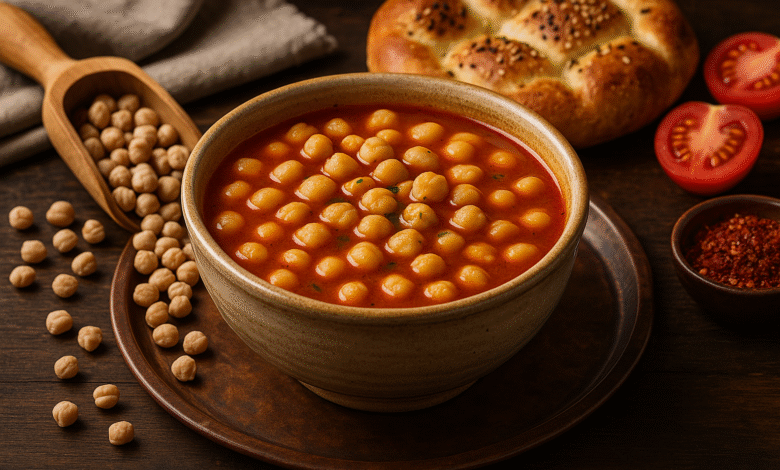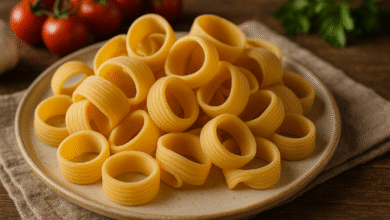Çeciir: Celebrating the Heart of Turkish Culinary Tradition

Çeciir is not merely a recipe; it is a rich cultural symbol that embodies the essence of Turkish hospitality, tradition, and flavor. This hearty chickpea-based dish has been a staple in Turkish homes for generations and is deeply rooted in the country’s agricultural and culinary past. From family tables to street vendors and gourmet kitchens, Çeciir continues to hold a special place in the hearts of many.
The Deep Roots of Çeciir
The origins of Çeciir are closely tied to the long-standing agricultural practices of Turkey. Chickpeas, or garbanzo beans, have been cultivated in the region for thousands of years, dating back to the Ottoman era and earlier. These legumes have always been valued for their nutritional richness, affordability, and adaptability in a variety of dishes. The very name “Çeciir” speaks to the humble beginnings and simplicity of the ingredients, yet the dish itself has evolved into something much more meaningful.
Over centuries, Turkish communities have continued to prepare Çeciir in their homes, preserving not only the recipe but also the cultural stories that surround it. The continuity of this tradition highlights the importance of food as a way of connecting generations and fostering community spirit.
Preparing Traditional Çeciir
Making Çeciir is a process rooted in care and patience. The first step involves soaking dried chickpeas overnight to soften them and reduce cooking time. Once drained and rinsed, the chickpeas are simmered with a rich blend of flavors including minced garlic, chopped onions, tomato paste, and olive oil. Whether prepared with vegetable broth or chicken broth, the goal is to build a base that is aromatic and full of depth.
The addition of spices such as cumin, oregano, bay leaves, and red pepper flakes enhances the overall taste, making Çeciir a warming and flavorful dish. Typically served with a side of rice or freshly baked bread, it is often garnished with parsley, lemon juice, or a touch of paprika to bring a hint of freshness.
Regional Interpretations of Çeciir
One of the most fascinating aspects of Çeciir is its regional versatility. In different areas of Turkey, local ingredients and cooking styles influence the way the dish is prepared. For example:
-
Black Sea Region: Here, Çeciir may include corn or herbs such as dill and parsley to reflect the local flora.
-
Central Anatolia: The dish is often paired with meat or rich stews, creating a hearty, comforting meal.
-
Mediterranean Coast: Fresh citrus flavors or seafood are sometimes added to give the dish a coastal twist.
This adaptability makes Çeciir more than just a recipe—it becomes a culinary canvas that changes across regions, families, and even individual cooks.
Çeciir as a Cultural Icon
Food in Turkish culture is never just about sustenance; it is a profound expression of community, love, and tradition. Çeciir stands as a testament to this ideology. Often featured in family gatherings, it’s a dish that brings people together, encourages storytelling, and reinforces familial ties.
Many Turkish families have their own special version of Çeciir, passed down through generations. Preparing the dish becomes a ritual—one that ties people to their heritage and invites others into the warmth of their home. Offering Çeciir to guests is considered a sign of hospitality, showcasing the generosity and communal values of Turkish society.
Health and Nutritional Value of Çeciir
Besides its cultural value, Çeciir is lauded for its numerous health benefits. The main ingredient—chickpeas—is a nutritional powerhouse. Rich in plant-based protein, fibre, iron, potassium, magnesium, and folate, chickpeas support several aspects of good health.
Consuming Çeciir regularly can:
-
Aid digestion thanks to high fibre content
-
Help regulate blood sugar levels
-
Contribute to cardiovascular health due to antioxidant properties
-
Support weight management because of its high protein and low fat profile
Whether you’re vegetarian, managing diabetes, or simply seeking nutritious food, Çeciir makes a healthy and wholesome choice.
Çeciir’s Modern Role in Global Cuisine
In recent years, Çeciir has made its way into contemporary kitchens, not just in Turkey but around the world. As plant-based diets rise in popularity, so does the demand for ingredients like chickpeas that offer both flavor and nutrition.
Modern chefs have found creative ways to incorporate Çeciir into new dishes. Ground chickpeas are used in gluten-free baking; they’re blended into smoothies for a protein kick, roasted for snacks, or featured in vegetarian main courses. Still, no matter how it’s reimagined, the soul of Çeciir remains rooted in tradition.
Its increasing global popularity highlights the universal appeal of simple, healthful food with a deep cultural connection.
Çeciir and Sustainable Farming
An often-overlooked aspect of Çeciir is its contribution to sustainable agriculture. Many Turkish farmers grow chickpeas using traditional, eco-friendly methods. This involves avoiding synthetic pesticides and maintaining soil health, which benefits both the environment and the consumer.
By supporting local chickpea farming through the continued consumption of Çeciir, individuals contribute to preserving rural economies and promoting environmentally responsible food production. It’s a reminder that eating well and sustainably can go hand in hand.
Experiencing Çeciir in Everyday Life
Whether you’re exploring the vibrant markets of Istanbul or sitting down for dinner in a rural village, Çeciir is never far from reach. It is sold by street vendors as a quick snack and served at family dinners as a beloved comfort food. The sound of sizzling pots, the aroma of simmering spices, and the warmth of shared stories all revolve around this cherished dish.
To truly understand Çeciir, one must taste it in the context of Turkish life—where every meal is a celebration, every recipe a story, and every ingredient a connection to the past.
Frequently Asked Questions (FAQs)
Q1: What is Çeciir made from?
A1: Çeciir is primarily made from chickpeas, combined with onions, garlic, tomato paste, olive oil, broth, and various spices like cumin, oregano, and red pepper flakes.
Q2: Is Çeciir a vegetarian dish?
A2: Yes, Çeciir can be vegetarian if prepared with vegetable broth. However, some regions use chicken broth or serve it with meat.
Q3: Can I use canned chickpeas for Çeciir?
A3: While traditionally dried chickpeas are used, canned chickpeas can be a convenient substitute, though they may slightly alter the texture and flavor.
Q4: Is Çeciir good for people with diabetes?
A4: Yes, due to its high fibre and protein content, Çeciir can help regulate blood sugar levels, making it suitable for diabetics.
Q5: How is Çeciir typically served?
A5: Çeciir is usually served warm with rice or bread, and often garnished with fresh herbs, lemon juice, or spices.



